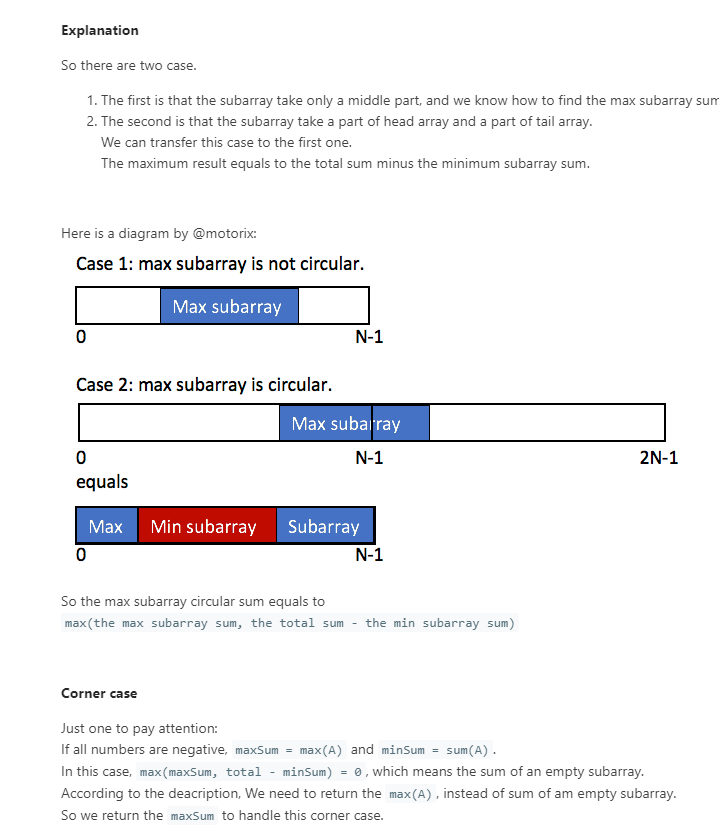Given a circular array C of integers represented by A, find the maximum possible sum of a non-empty subarray of C.
Here, a circular array means the end of the array connects to the beginning of the array. (Formally, C[i] = A[i] when 0 <= i < A.length, and C[i+A.length] = C[i] when i >= 0.)
Also, a subarray may only include each element of the fixed buffer A at most once. (Formally, for a subarray C[i], C[i+1], ..., C[j], there does not exist i <= k1, k2 <= j with k1 % A.length = k2 % A.length.)
Example 1:
Input: [1,-2,3,-2]
Output: 3
Explanation: Subarray [3] has maximum sum 3
Example 2:
Input: [5,-3,5]
Output: 10
Explanation: Subarray [5,5] has maximum sum 5 + 5 = 10
Example 3:
Input: [3,-1,2,-1]
Output: 4
Explanation: Subarray [2,-1,3] has maximum sum 2 + (-1) + 3 = 4
Example 4:
Input: [3,-2,2,-3]
Output: 3
Explanation: Subarray [3] and [3,-2,2] both have maximum sum 3
Example 5:
Input: [-2,-3,-1]
Output: -1
Explanation: Subarray [-1] has maximum sum -1
Note:
-30000 <= A[i] <= 300001 <= A.length <= 30000
class Solution { public int maxSubarraySumCircular(int[] A) { int total = 0, curmin = 0, curmax = 0, max = Integer.MIN_VALUE, min = Integer.MAX_VALUE; for(int num: A){ curmin = Math.min(num, num + curmin); min = Math.min(min, curmin); curmax = Math.max(num, num + curmax); max = Math.max(max, curmax); total += num; } return max > 0 ? Math.max(total - min, max) : max; } }
lee哥真乃人中龙凤
https://leetcode.com/problems/maximum-sum-circular-subarray/discuss/178422/One-Pass
